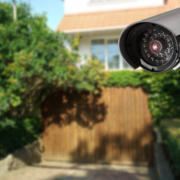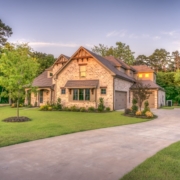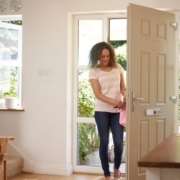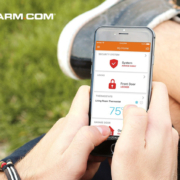Everything You Need to Know About Home Automation and Smart Security Integration
The concept of home automation has evolved dramatically over the last decade, turning what was once a futuristic fantasy into an everyday reality for homeowners around the world. From smart thermostats that adjust themselves to your lifestyle to integrated security systems that let you monitor your home from anywhere in the world, technology is revolutionizing how we interact with and protect our living spaces. At the heart of this transformation lies the seamless integration of home automation and smart security — a blend that not only enhances convenience but also significantly bolsters the safety of modern homes. This article delves into the many facets of home automation and smart security integration, uncovering how they work, their benefits, the technologies involved, and how to get started.
Home Automation and Smart Security
Home automation refers to the use of technology to control various household functions and appliances through a centralized system, often remotely. It allows users to manage lighting, heating, air conditioning, entertainment systems, and more through mobile apps or voice commands. Smart security, a critical subset of home automation, focuses specifically on protecting the home. This includes surveillance cameras, smart locks, motion sensors, and alarm systems that work together to detect and deter intrusions or emergencies.
The integration of these systems is what makes them truly powerful. A standalone camera or smart thermostat has limited utility, but when interconnected — for example, having lights flash and cameras record when a motion sensor is triggered — the home becomes both more secure and intelligent. This synergy is what sets modern smart homes apart from older, isolated systems.
Key Technologies That Power Smart Homes
At the core of every smart home is a network of interconnected devices that communicate with one another through wireless protocols such as Wi-Fi, Zigbee, Z-Wave, and Bluetooth. These protocols enable everything from a smart light bulb to a door sensor to transmit data back to a central hub or cloud platform. Voice assistants like Amazon Alexa, Google Assistant, and Apple’s Siri act as user interfaces, making it easier than ever to control devices via spoken commands or smartphone apps.
Smart thermostats like the Nest Learning Thermostat adjust indoor temperature based on your behavior and preferences. Smart lighting systems, such as Philips Hue, allow for scheduling and mood settings. Meanwhile, security-specific tech includes smart doorbells like Ring, which provide video feeds and two-way audio, and smart locks that allow keyless entry and remote access. Central hubs like Samsung SmartThings or Apple HomeKit act as the brain of the operation, enabling automation routines — for example, arming the alarm and turning off lights when everyone leaves the house.
Artificial intelligence (AI) and machine learning further enhance these systems by learning from user behaviors to optimize energy usage or detect unusual patterns that may signal a security threat. The real power, however, lies in the integration of these devices into a cohesive ecosystem where the whole is greater than the sum of its parts.
Benefits of Integrating Home Automation and Smart Security
The primary benefit of integrating home automation and smart security is comprehensive control and peace of mind. You’re not just automating routine tasks — you’re creating a responsive environment that anticipates and reacts to your needs and potential threats.
From a security perspective, integration allows for layered protection. If a smart camera detects motion, the system can automatically alert you, flash the lights, and record footage. Smart locks can notify you when a door is opened and can even lock automatically if you forget. These features not only improve physical security but also act as powerful deterrents against potential intruders.
From a lifestyle standpoint, automation can lead to energy savings and greater comfort. Smart thermostats reduce utility bills by adjusting temperatures based on occupancy and preferences. Automated lighting schedules ensure that lights are only on when needed. For frequent travelers or busy professionals, remote monitoring offers reassurance and control over your home’s state, no matter where you are.
Additionally, smart systems can be particularly beneficial for the elderly or those with mobility challenges. Voice commands or scheduled routines can simplify daily activities, while integrated security ensures their safety without constant supervision.
Challenges and Considerations
While the advantages are compelling, there are important considerations when integrating home automation and smart security systems. One of the biggest concerns is privacy and data security. With devices constantly collecting data — whether it’s video footage or behavioral patterns — the risk of hacking or unauthorized access is real. It’s critical to choose reputable brands with strong encryption protocols and transparent data policies. Regular software updates and secure Wi-Fi practices (like using strong passwords and multi-factor authentication) also help safeguard your smart home.
Compatibility is another challenge. Not all devices work seamlessly with each other, especially when mixing brands. It’s advisable to choose products that support standard protocols or are certified for popular ecosystems like Google Home, Amazon Alexa, or Apple HomeKit. A fragmented system can be frustrating to manage and may not perform to its full potential.
Cost can also be a barrier. While prices have come down, outfitting a home with smart devices — particularly high-end security cameras, locks, and sensors — can be expensive. However, this cost is often offset over time through energy savings, increased home value, and the intangible benefit of enhanced peace of mind.
Lastly, ease of use and accessibility must be considered. A smart home that is difficult to operate or frequently malfunctions defeats its purpose. Setup should be intuitive, and support should be readily available. Many manufacturers now offer professional installation services for users who prefer a hands-off approach.
How to Get Started with a Smart and Secure Home
Starting with home automation and smart security doesn’t require a full-scale overhaul. The best approach is to begin small and expand over time. Identify your primary goals: Is your focus security, energy efficiency, convenience, or a mix of all three? This will help determine which devices to prioritize.
For beginners, a smart speaker and a few smart bulbs are often a low-cost entry point. From there, consider adding a smart thermostat and smart plugs to control heating and appliances. Once comfortable, expand to security features like doorbell cameras, motion sensors, and smart locks. Ensure that all devices are compatible with your chosen ecosystem to streamline automation and control.
Automation routines can then be created to match your lifestyle. A “Good Morning” routine might gradually brighten lights, raise the thermostat, and read out the day’s calendar. A “Leaving Home” routine could arm the security system, turn off lights, and lock all doors. These routines not only enhance convenience but also embed security into everyday actions.
Professional integration services are also available for those who want a turnkey solution. These services often include personalized consultations, installation, and ongoing support. Regardless of the approach, education is key — understanding how the technology works ensures you get the most out of it.
It’s also worth exploring rebates or incentives offered by utility companies or local governments for energy-efficient upgrades. These programs can make the initial investment more affordable and encourage the adoption of sustainable technology.
In the long term, as 5G networks and edge computing become more prevalent, smart home technology will become even more responsive, reliable, and autonomous. Emerging innovations such as facial recognition for access control, AI-powered threat detection, and integration with electric vehicles and solar panels will continue to redefine what a secure and automated home can be.
Conclusion
Home automation and smart security integration represent more than just a trend — they are reshaping how we live. By offering increased control, energy efficiency, and safety, these technologies empower homeowners to create smarter, more responsive environments. While challenges like cost, privacy, and compatibility remain, they are increasingly outweighed by the tangible and emotional benefits. Whether you’re just dipping your toes into automation or planning a comprehensive smart home upgrade, the journey promises to be both transformative and rewarding.
Need Business & Home Automation Services in Poughkeepsie, NY?
Here at Cyber Technologies, we’re passionate about transforming your home or office into a seamless, smart environment tailored to your lifestyle today and ready for the innovations of tomorrow. With over a decade of expertise in systems integration, we specialize in creating customized solutions for everything from security systems to home automation, energy management, and audio/video systems. Whether you’re looking to enhance comfort, efficiency, or security, our team stays ahead of the curve in technology to deliver solutions designed specifically for you. Reach out to us today, and let’s design a smarter, more connected future together!










